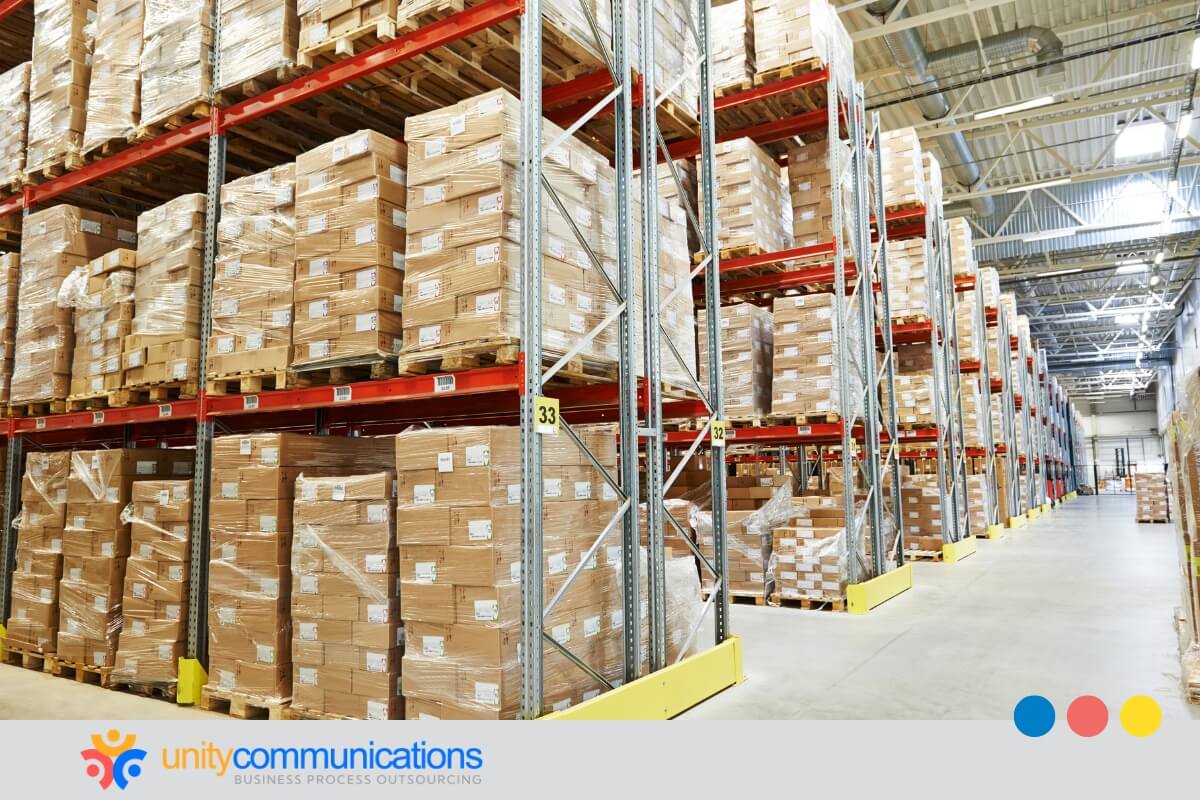Table of Contents
Supply chains are becoming more complex. Understanding the different business process outsourcing (BPO) models for logistics and their strategic advantages to overcome the challenges and remain competitive.
These include 3PL outsourcing. This approach helps businesses reduce overhead, improve delivery speed, and scale more efficiently.
This article is about third-party logistics (3PL) services, explained based on what they cover, what they offer, and how they transform supply chain management. Read below to learn more!
Third-party logistics (3PL) services explained in detail

The global 3PL market has grown significantly in recent years, driven by globalization, e-commerce growth, and complex supply chain operations. According to Grand View Research, it reached $1,095.85 billion in 2023. By 2030, it could be worth $1,877.51 billion.
But what is this BPO model? How does it support modern transportation management?
3PL services involve delegating logistics and supply chain management functions to an external provider. Rather than managing logistics in-house, you can partner with firms that bring expertise, technology, and infrastructure for greater efficiency.
3PL companies offer a wide range of logistics services. These include:
1. Transportation management
One critical 3PL service is transportation management. This refers to the cost-effective end-to-end movement of goods via road, rail, air, or sea.
3PL companies:
- Handle freight forwarding. They coordinate the shipment of goods between destinations for timely and efficient delivery.
- Negotiate with carriers. They secure the best shipping rates and service terms by leveraging industry relationships and bulk volume.
- Oversee customs clearance for cross-border shipments. They manage documentation and compliance to prevent delays at international borders.
- Comply with hazardous materials transport. They ensure safe handling, documentation, and carrier selection for regulated or sensitive goods.
- Plan for contingencies. They design backup transport options to keep goods moving during strikes, weather events, or capacity shortages.
These providers also use advanced software to optimize routes, reduce transit times, and minimize fuel costs. Real-time tracking and shipment visibility tools let you monitor the status of orders at every stage.
According to Straits Research, the global freight forwarding market was worth $229.8 billion in 2024. This highlights one of the core functions of third-party logistics (3PL) services, explained in the context of operational efficiency in complex supply chain operations.
2. Warehousing and distribution
The demand for warehouses is skyrocketing. CBRE projects that the U.S. will need over 1.33 billion square feet of new space by 2025. 3PL providers help address the shortage through diverse and comprehensive warehousing and distribution solutions:
- Shared warehousing. Multiple businesses share warehouse space, reducing costs and improving flexibility.
- On-demand storage. Short-term storage options help companies manage seasonal or unexpected inventory surges.
- Automated fulfillment centers. Robotics and advanced systems speed up picking, packing, and shipping.
- Last-mile distribution hubs. Local warehouses position goods closer to customers for faster delivery.
Modern warehouse spaces feature systems for climate control, inventory management, and security. They use advanced management systems to track inventory, reduce stockouts, and improve order accuracy.
Some 3PL companies combine multiple shipments into one load (consolidation) to reduce shipping costs. Others split them into smaller groups (deconsolidation) to optimize delivery times.
3. Order fulfillment
What’s the role of BPO providers in streamlining fulfillment services? They can integrate directly with e-commerce platforms to:
- Automatically process orders.
- Manage inventory.
- Coordinate last-mile delivery with minimal manual input.
- Oversee returns management.
- Handle returned products
- Conduct quality inspections.
- Restock items.
- Responsibly dispose of damaged items.
In e-commerce and retail, returns are inevitable in the customer experience. 3PL services explained in this context highlight how providers manage product returns, exchanges, repairs, recycling, or disposal in a cost-efficient and customer-friendly way.
4. Value-added services
Many 3PL providers offer value-added services that enhance the customer service experience and streamline operations. These include:
- Kitting and assembly (bundling multiple products into a single package)
- Labeling and customization (applying product labels, barcodes, or special packaging to meet your standards and regulatory requirements)
- Quality control and inspection (ensuring the products meet standards before shipping to reduce the risk of returns)
These extra services add flexibility and adaptability to the supply chain, allowing you to meet customer demands and maintain your competitive advantage.
5. Technology and insights
Reports show that poor supply chain data costs companies an average of $12.9 million annually. Modern 3PL providers address this challenge by utilizing advanced technology. Examples include:
- GPS-enabled and cloud-based platforms enhance oversight into shipments, warehouse operations, and inventory levels.
- Data analytics forecast market trends, optimize inventory, and reduce waste.
- Enterprise resource planning (ERP), customer relationship management (CRM), and e-commerce platforms boost operational efficiency and data accuracy.
With 3PL services explained through the lens of technology, it’s clear that digital maturity is now a competitive differentiator.
Different types of 3PL models and their applications
Now that third-party logistics (3PL) services are explained, let’s discuss the models. They vary based on their scope of services and level of integration. Choose based on your operational complexity, size, and strategic goals.
1. Transactional model
The 3PL provider focuses on transportation, warehousing, or order fulfillment. The relationship between the external team and the client is largely transactional. The external team provides services as needed.
This model suits small- to medium-sized businesses seeking cost-effective third-party logistics companies. Examples include those managing seasonal shipping needs or dealing with limited storage space.
2. Service developer model
The model offers more advanced, value-added services, including custom solutions for IT system integration, inventory tracking, product assembly, and advanced reporting. 3PL providers use technology to improve operations and supply chain visibility.
Consider this option when expanding into new markets or launching complex product lines. It is also ideal if you need more sophisticated logistics solutions but do not require full supply-chain integration. If you run an e-commerce company, you can work with a 3PL to handle order fulfillment, product customization, and real-time inventory updates linked to your online store.
3. Customer adapter model
A customer adapter takes complete control of your existing logistics activities. Rather than offering a menu of services, the 3PL adapts to and manages your current processes, essentially functioning as an extension of your logistics operations.
However, the 3PL team does not typically innovate or improve processes. Instead, it focuses on execution. One example is when a mid-sized manufacturer outsources warehouse and distribution operations to a third-party BPO without altering workflows.
This model suits businesses outsourcing logistics without significant changes and those lacking resources but wanting control over process design.
4. Customer development model
Of all the third-party logistics (3PL) services explained, this model represents the highest level of collaboration and transformation. The third-party company becomes your strategic partner. They can develop, customize, and manage the entire logistics solution.
A customer developmental model is ideal for complex, global enterprises. These businesses often require end-to-end solutions and long-term partnerships. They need complete visibility, optimization, and strategic input from the logistics provider.
Benefits of engaging with a 3PL provider

Outsourcing logistics can streamline your supply chain operations, reduce costs, and help your internal team focus on your core business objectives.
The following further explains its key BPO advantages:
- Cost savings. Access to their established carrier relationships and warehouse facilities can lower overall transportation, storage, and labor expenses. Your 3PL partner can also optimize shipping routes and consolidate shipments to reduce freight costs.
- Scalability and flexibility. 3PL providers offer solutions that can adapt to changes in demand. Whether you encounter seasonal peaks, unexpected surges in order volume, or rapid market expansion, your vendor can adjust resources and capacity accordingly. The provider’s flexibility lets you avoid the costs and complexities of scaling internally.
- Access to expertise and technology. 3PL providers use advanced warehouse management systems (WMS), transportation management systems (TMS), and data analytics tools to improve accuracy, tracking, and decision-making. You can tap into their technologies to avoid buying or developing platforms in-house.
- Improved customer service. You can boost customer satisfaction with on-time deliveries, accurate order fulfillment, and real-time shipment tracking. Many 3PL companies also offer customization, kitting, and returns management to improve customer experience and retention.
- Focus on core competencies. Outsourcing logistics lets you focus on product development, marketing, and customer engagement instead of managing complex supply chain operations. By handing off logistics to industry experts, you can allocate resources more effectively and support growth.
- Global reach and market expansion. If you want to expand into new regions or countries, 3PL firms offer the infrastructure and expertise to navigate cross-border logistics, customs regulations, and international shipping. Their assistance can accelerate your market entry and simplify compliance.
- Risk mitigation and compliance. A reputable 3PL company knows industry regulations, safety standards, and risk management practices. Their knowledge can help you comply with changing rules, minimize penalty risks, and implement contingency plans to address disruptions.
These benefits reinforce the value of 3PL services, explained as levers for operational focus, scalability, and long-term supply chain resilience.
Criteria for selecting the right 3PL partner
With third-party logistics (3PL) services explained, you’ll understand that not all providers are equal. Each offers different levels of service, technology, and expertise.
Choose the right 3PL partner with these criteria:
1. Range of services offered
When selecting a 3PL partner, assessing the breadth and depth of their service offerings is crucial. A strong provider should offer a complete range of logistics solutions and value-added services. This can simplify supply chain management, reduce the need for multiple vendors, and improve the flow of goods.
2. Industry expertise and reputation
A provider’s track record and industry-specific expertise make a significant difference in your operational success. Look for a 3PL with deep experience with your type of products, industry regulations, and market dynamics.
A strong reputation shown through testimonials, case studies, and certifications builds confidence in their ability to support your growth.
3. Technology and visibility
An ideal 3PL partner should leverage modern systems to provide complete visibility into your inventory levels, shipment status, and delivery timelines. Their tech should quickly integrate with your existing platforms for a smoother data exchange and streamlined operations.
4. Financial stability and risk management
As your business evolves, your logistics needs might change. A valuable 3PL partner should offer solutions that can adjust to demand fluctuations or geographic expansions.
Flexibility in service levels, warehouse capacity, and transportation options ensures that your supply chain remains agile even in dynamic markets.
5. Cultural fit and communication
Beyond technical capabilities, a 3PL’s alignment with your company’s culture, values, and communication style is crucial for a successful partnership. Open communication, clear reporting structures, and shared problem-solving approaches strengthen collaboration.
Assess how well the 3PL’s culture resonates with yours. Ensure they prioritize customer service and responsiveness to your needs.
6. Cost structure and transparency
Consider the financial aspect of the partnership. Transparent pricing models, clear service-level agreements (SLAs), and competitive rates enable you to plan and control logistics expenses.
Evaluate the overall value of a 3PL team, especially in cost savings, service quality, and operational improvements.
Common challenges and how to mitigate them

Although working with a 3PL firm has many benefits, you might still encounter challenges that affect the supply chain. Understanding these common pitfalls can help you develop proactive solutions:
1. Lack of visibility
One common 3PL concern is limited visibility. This lack of transparency can lead to delays, stockouts, or miscommunications.
Avoid this by choosing a provider with robust technology platforms, especially for real-time tracking and reporting. Ensure they can integrate these systems with your internal tools to monitor supply chain activities as if they were handled in-house.
2. Communication gaps
Poor communication results in misunderstandings, delays, and missed opportunities. Communication gaps often stem from unclear expectations, inconsistent updates, or misaligned reporting structures.
Preventing this issue requires establishing clear lines of communication from the start. Set regular update schedules, escalation procedures, and key points of contact. Encourage parties to share updates and help resolve issues.
3. Service quality inconsistencies
Some businesses experience fluctuating service quality, such as late deliveries, inaccurate order fulfillment, or poor handling of goods. These inconsistencies can damage your brand reputation and customer satisfaction.
To mitigate this, you must establish clear performance metrics and SLAs in your contract. Monitor performance closely through regular reviews and audits. Choose a partner with a track record of high service standards and a commitment to continuous improvement.
To avoid these pitfalls, having third-party logistics (3PL) services explained clearly during the selection phase helps align expectations and performance goals.
The bottom line
From warehousing and transportation to inventory management and technology integration, the right 3PL partner can transform your logistics into a strategic advantage.
With third-party logistics (3PL) services explained, it becomes clear that selecting the right provider requires careful consideration of offerings, industry expertise, technology capabilities, and cultural fit. Researching opportunities and challenges informs decisions that support your company’s growth.
Want to improve your logistics strategy? Let’s connect to unlock new levels of business success.




